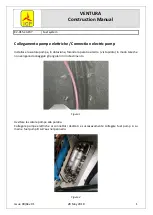
28
IMPORTANT: Any repairs should only be carried
out by the manufacturer or by an approved
agent. This will ensure that the correct
materials and repair techniques are used.
Maintenance and repairs
The materials used in this harness have been carefully selected for maximum durability. Nevertheless,
keep your harness clean and airworthy to ensure the longest possible period of safe operation.
Care and maintenance
Don’t drag your harness over rough or rocky ground. Avoid unnecessary exposure to UV rays, heat and
humidity. Keep the folded harness in your rucksack when not in use.
Store all your equipment in a cool, dry place, and never put it away while damp or wet. Regularly clean
off dirt with a plastic bristled brush and/or a damp cloth. If the harness gets exceptionally dirty, wash it
with water and a mild soap. Make sure you first remove the entire sub-components for example, rescue
parachute etc. Allow the harness to dry naturally in a well ventilated area away from direct sunlight. If
your rescue parachute ever gets wet (e.g. in a water landing) you must separate it from the harness, dry
it and repack it before putting it back in its separate outer container. Occasionally lubricate the zips and
buckles with silicone spray, no more than once a year.
After a hard landing you must check your harness for damage, pay close attention to the rescue
container and verify all of the attachments are secure.
Inspection checklist
In addition to regular pre-flight checks, your harness should be inspected thoroughly on every rescue
repack of 150 days. Additional inspections should be performed after any crash, bad landing or take off, or
if there are any signs of damage or undue wear. Always seek professional advice whenever in doubt.
The following checks should be carried out:
Check all webbing, straps and buckles for wear and damage, especially the areas that are not
easily seen, such as the inside of the carabiner hook-in points.
All sewing must be intact and any anomalies attended to immediately to avoid exacerbation of
the problem.
Special attention should be paid to the rescue installation, particularly the elastic and Velcro
parts.
The main carabiners must be replaced at least every 5 years or after 500 hours, whatever comes
first. Impacts may create undetectable cracks that could result in structural failure under continuous
load.
Содержание Genie Lite 2 L
Страница 1: ...1 ...
Страница 2: ...2 pilot manual v2 1 03 2017 ...
Страница 3: ...3 XC pilot harness ...
Страница 20: ...20 2 1 4 6 8 3 5 7 A A A A D D B C C view inside the harness ...
Страница 37: ...37 Dream Touch Believe www gingliders com ...










































